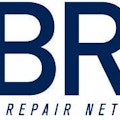The dangers of counterfeit parts present challenge for collision repair industry
- Abe Jardines – Intellectual Property Rights Coordination Center
- John Lancaster – Subaru of America, Inc.
- Teena Bohi – Toyota Motor North America
- Andy Forsythe – Nissan Group of North America
To more effectively counter the flood of counterfeit/hazardous products by coordinating and leading the U.S. Government’s response to this threat, the ICE-led National Intellectual Property Rights Coordination Center (IPR Center) has been restructured and moved into a new “state of the art” facility in Arlington, VA. The center operates in a “task force” like setting with all 25 partners focusing on Interdiction, Investigation and Outreach & Training to combat IP theft.
“We are working to promote national security by protecting the public’s health and safety, the U.S. economy, our war fighters, and to stop predatory and illegal trade practices that threaten the U.S. and global economies,” said Jardines. “This whole of government approach brings to bear all the regulatory, civil and criminal authorities of the partner agencies to fight counterfeiting and piracy. This approach lays the foundation to partner with Industry, other Law Enforcement Agencies and provide education amongst them and the public of the dangers and effects of IP theft.
“The bottom line is, can you trust the people that you are getting your parts from,” he added.
The Automotive Anti-Counterfeiting Council is a collaboration among automakers and their partners that strives to eliminate counterfeit automotive components that could harm U.S. consumers.
“Every type of part can be counterfeited, from keys to airbags, brakes, airbags, headlights and suspensions,” said Lancaster. “Not only do these counterfeit parts violate the OEM intellectual property, they can be incredibly dangerous for the repair professional and the consumer. We have reached out to law enforcement offices, ports and branches all throughout the U.S. and have found great success thus far, but counterfeit auto parts are a problem that requires more help.... your help.”
Bohi cited several key initiatives the Automotive Anti-Counterfeiting Council is pursuing to address the issue:
- Increase accountability and responsibility of e-commerce platforms in preventing sales of counterfeit goods
- Marketplaces should promote consumer awareness and implement a simple way for consumers to report bad actors to those who can take proper actions
- Increase seller, supplier and product vetting to combat the presence of bad actors online
- Marketplaces should improve vetting of sellers, suppliers and products by implementing more stringent requirements that validate seller credentials and product authenticity
- Strengthen penalties for repeat offenders of health and safety products (i.e. auto parts)
- Implement standardized parameters and more stringent penalties be imposed on sellers, especially those offering products like auto parts that impact health and public safety.
According to Forsythe, there are several signs to look for when evaluating the veracity of the parts ordered:
- Labels that do not match or have conflicting information
- Labels hiding other labels
- Unrealistic production dates
- Mis-spellings
- Poor packaging, nested boxes, empty boxes and shrink wrap
“Genuine OEM parts are properly tested, reliable and offer great quality,” said Forsythe. “Meanwhile, counterfeit or illicit parts are untested, have an increased potential for failures, and can negatively impact safety, reputation and liability. To protect your collision repair shop and your customers, you should know your source in procuring parts for repairs, flag potential counterfeit parts and report counterfeit parts to the IRC at www.iprcenter.gov/contact-us.”
About Guild 21
Guild 21 started at the 2012 VeriFacts Fix it Right, Fix it Smart Symposium, when Dale Delmege and collision repair leaders saw a need to recommit to serving the public. Together with other industry professionals, they developed a Hippocratic Oath for those in the collision repair industry. More than just developing an oath, the industry leaders of Guild 21 sought to innovate the way information is shared throughout the industry. With the use of cloud and VOIP technology, Guild 21 began holding monthly meetings with speakers in 2014, and each month it presents the latest and most valuable information collision repair leaders can use. For membership and more information, email [email protected].
About VeriFacts Automotive
VeriFacts Automotive, headquartered in Newport Beach, CA, provides the highest level of collision repair business coaching, evaluation and verification services, delivering OEM certifications to ensure collision repair facilities are prepared to deliver safe and reliable repairs. Today, VeriFacts has partnerships with the majority of leading multi-shop collision repair organizations, independent repair facilities and top vehicle manufacturers and is recognized by top insurance carriers, among others. VeriFacts employs more than 75 team members across North America. For more information, visit www.VeriFactsAuto.com.
About the Author
